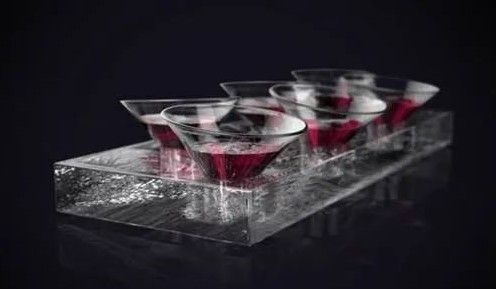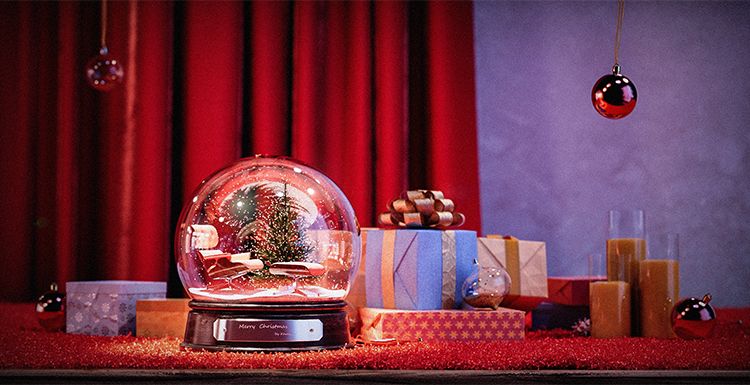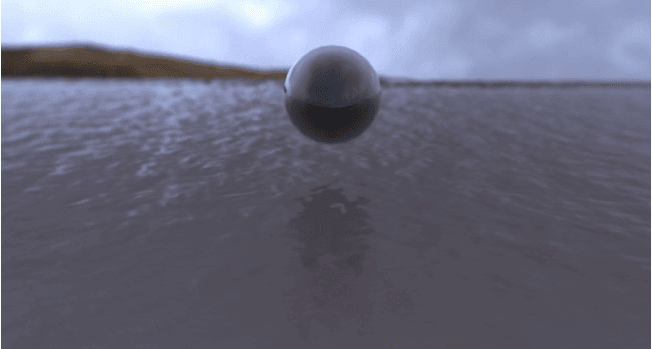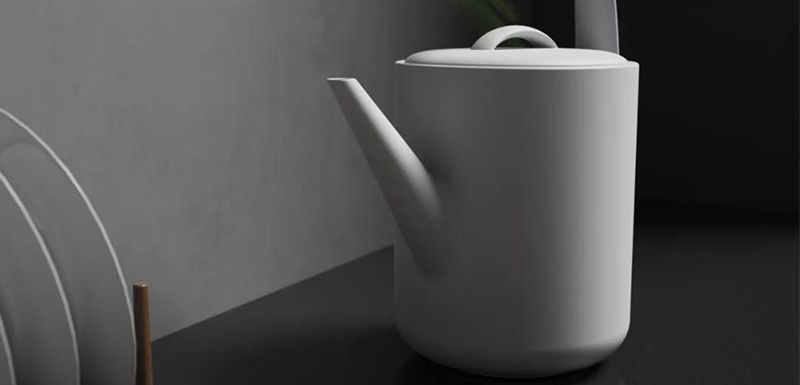KeyShot Tutorial: How to Render Realistic Ice

The best cloud rendering services provider and render farm, Fox Renderfarm will share with you a tutorial about how to use KeyShot to render realistic ice.
Tip: To create the ice art shown in the figure, in addition to using KeyShot, we should also know how to create 3D models, using SolidWorks and Photoshop.
Modeling
Use SolidWorks to create a model. Since we are focusing on KeyShot realistic rendering today, the modelling process will not be discussed in detail.

Import into KeyShot
Open the KeyShot and import the model into the KeyShot by dragging and dropping or by using the 'import' button. We'll see the entire model in white, and open the projects window at the bottom of the interface, where Boaz has changed his name to' glass 'and' ice 'to know what parts he's working on, then select all ice parts, right-click to select the' Unlinked 'related material.

Material
Change the material Of the glass to Solid Glass, and other selections remain the same.

Adjust Material Settings
Next, select an ice cube, assign it a liquid material, set the refractive index to 3, the external refractive index to 1.5, the transparency to 8, and the color to red: 220 green: 230 blue: 255.

Texturing
The ice will now become clear, but there is still something missing. Looking at frozen ice, we’ll see that it's not completely transparent because when water freezes, bubbles and particles in the water seep into the frozen ice. To achieve this effect, we have to set up bump maps and opacity maps, and we need to create textures in Photoshop. Open Photoshop and create a new blank document that is 5000X5000 in size and has a white background.
Then, create a new blank layer and place it under the background layer. Right-click the background layer, then select 'background layer mask', and click the Add Layer Mask button to set a mask on the White layer. The mask is used because the mask can be modified or replaced all the time without affecting the image layer itself. Next, choose a large multi-Thorn Brush, paint the mask black, and reserve a "frame" at the four corners of the page. Don't worry about the mask being completely black. We finally get a white frame without a background, similar to broken ice.

Save the created file in PNG format, and the texture is done.

Apply Texture
In KeyShot, go back to the material tab in the Project window, click the "texture" tab, select the newly created texture file, set the "bump" and "opaque" textures, and check the "sync" so that if we want to change some attributes, the bump texture will be linked to the opaque texture; the new ice material is complete, and we can save the material to the material library.
Copy and Paste Materials
Return to the 'scene' tab and copy and paste the ice material into the remaining assembly.

Adjust Advanced Settings
The ice looks much better, but it's still not very transparent, because KeyShot renders lighting through materials, so we need to go to the settings options, expand the advanced section, and increase the default number of light reflections from 6 to 12. Don't just increase the number, because some rendering passes take a lot of time. Next, turn on global illumination and, if you like, add a nice dark "illustration" to the scene.

Application Environment
This step requires setting up the lighting environment, opening the library, setting up a beautiful contrast environment, and selecting ' 3 points lighting high 2k'.

Adjust Environment and Camera
Return to the items menu, go to the environment option, and modify the settings according to your personal preferences. Instead of lighting environment, we can configure a color at the back of the model to a cool grey (red: 3. Green: 3, blue: 4), and "ground reflection" can also be checked.
Next, you need to adjust the camera. Go to the "camera" menu, click "+" to create a new camera, name it, and then click "enter edit mode" to set the parameters, including depth of field, according to your own preferences to create a close-up feel. By adjusting the aperture value, we can make objects that are not in focus more blurred but remember not to make them too blurred, just make them look real. When finished, tap exit edit mode and then lock the camera.
Set Realistic Rendering Quality
Next, go to the rendering menu. First, jump to the quality tab, set the quality parameters as needed, turn on sample values to get a higher quality realistic rendering, and increase the depth of field value because we're using depth of field in this scene, and finally, set the 'Ray reflections' to 12.

Realistic Rendering
Return to the output menu, set the image size, the higher the pixels are, the better for printing, and you can get pixels equivalent to centimetres per foot by opening a new document in Photoshop and changing the size setting method. You can also choose to save in TIF format to get an image without a background. Finally, click render and wait patiently. The realistic rendering process may be a little long.

Final Render Realistic
The final effect has come out and it took nearly 10 hours of high-quality realistic rendering. It took so long because of the complexity of the layered transparency, or it could be because the sample values were set higher. In general, Render Time is also affected by the opacity, depth of field, and other visual effects of the assembly.

Fox Renderfarm hopes this KeyShot tutorial can be of some help to you to render realistic.
It is well known that Fox Renderfarm is an excellent cloud rendering services provider in the CG world, so if you need to find a render farm, why not try Fox Renderfarm, which is offering a free $25 trial for new users? Thanks for reading!
Recommended reading
Top 9 Best And Free Blender Render Farms of 2025
2024-12-30
What is Jibaro? Reveal the Story and Techniques Behind the Production of Jibaro "Love, Death & Robots"
2025-11-03
Top 10 Free And Best Cloud Rendering Services in 2025
2025-03-03
9 Best & Free 3D Rendering Software for Architects & Designers
2025-12-08
Top 8 After Effects Render Farm Recommended of 2025
2025-02-10
Easy Cel Shading Tutorial for Cartoon in Blender Within 2 Minutes
2025-11-26
Shocked! The Secret Behind Using 3D to Make 2D Animation was Revealed!
2025-02-10
How to Render High-quality Images in Blender
2024-12-04
Partners
Previous: How to Use KeyShot 9 to Render Christmas Scene - Tutorial
Next: How to Render Water Surface in KeyShot?
Interested







